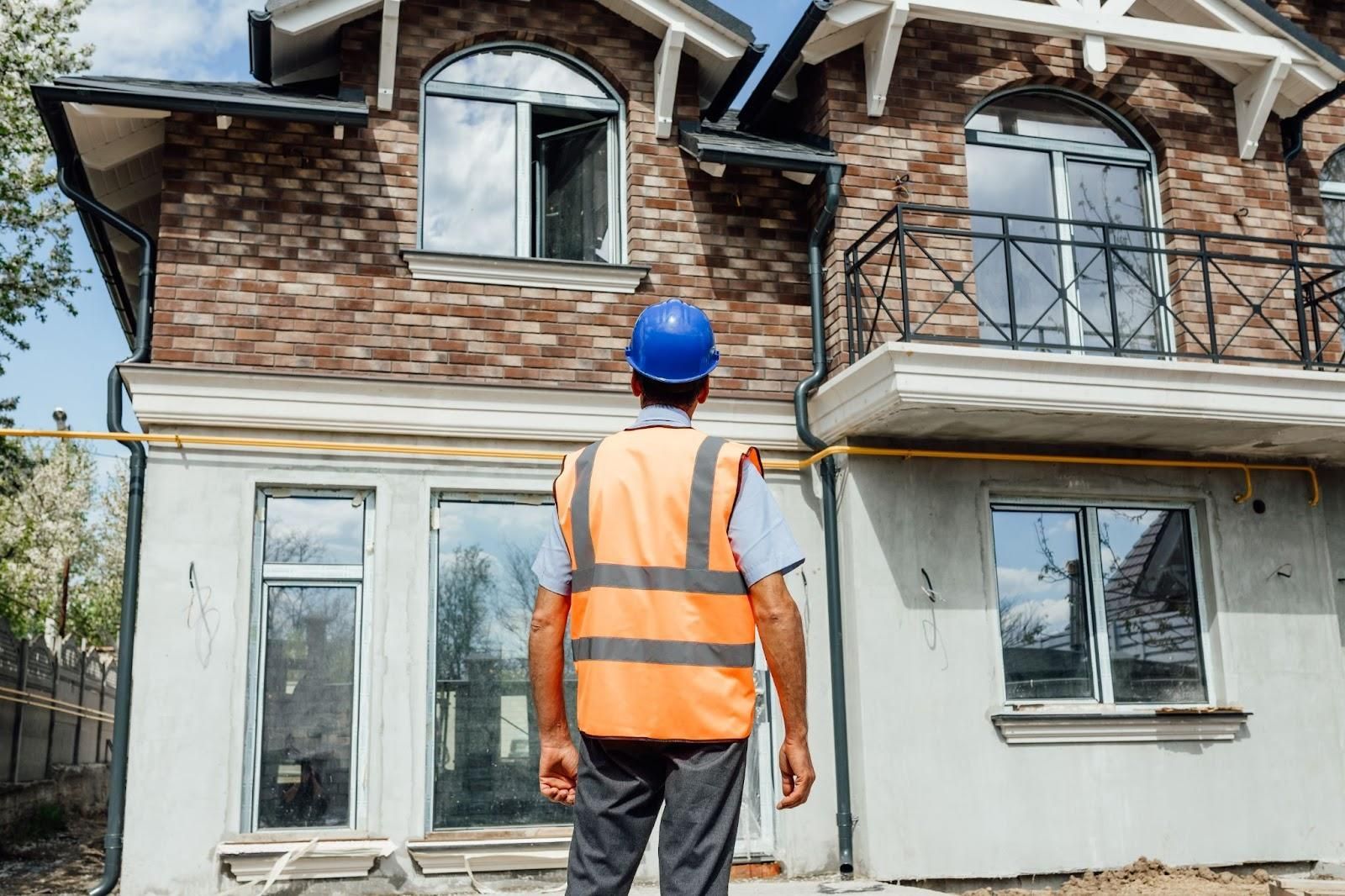Stress-Free TAS Plan Review in Texas to Ensure Accessibility Standards
Navigating property evaluations and inspections can be a daunting experience for homeowners. With complex regulations and the pressure of ensuring compliance, many feel overwhelmed by the process. The Texas Accessibility Standards (TAS) plan review adds another layer of complexity, requiring careful attention to detail and adherence to specific guidelines.
Accurate Home and Commercial Services understands these frustrations. They offer reliable and accurate solutions to simplify the TAS plan review process in Texas. By providing thorough inspections and expert guidance, they help homeowners achieve peace of mind, ensuring their properties meet accessibility standards without the usual stress. With their support, navigating the world of property evaluations becomes a seamless experience.
Overview of TAS Plan Review Texas
The Texas Accessibility Standards (TAS) plan review ensures construction and renovations meet accessibility requirements for individuals with disabilities. The Texas Department of Licensing and Regulation (TDLR) requires projects over $50,000 to undergo a review before starting, ensuring compliance with TAS and the Americans with Disabilities Act (ADA).
A registered accessibility specialist (RAS) inspects the plans to check for compliance with standards, evaluating design layout, entrances, pathways, and restrooms. The RAS provides feedback to help property owners make necessary changes for inclusivity.
Accurate Home and Commercial Services offers licensed inspections, including TAS plan reviews, to simplify the process for homeowners, builders, and property managers. Trust their experts to help you achieve compliance and promote equal access in your Texas property.
Importance of TAS Plan Review
The TAS plan review plays a vital role in ensuring compliance with accessibility regulations and enhancing accessibility in Texas.
Compliance with Regulations
Compliance with the Texas Accessibility Standards (TAS) ensures construction and renovation projects meet legal requirements. The Texas Department of Licensing and Regulation (TDLR) mandates that projects over $50,000 undergo a plan review. A registered accessibility specialist (RAS) inspects elements like entrances, pathways, and restrooms, promoting adherence to the Americans with Disabilities Act (ADA).
Enhancing Accessibility
Enhancing accessibility through the TAS plan review benefits individuals with disabilities, promoting inclusivity. Proper evaluations consider layout and design, ensuring that all users can navigate spaces safely and comfortably. This attention to detail fosters positive experiences for all visitors and enhances property value. Choosing experienced professionals, like Accurate Home and Commercial Services, simplifies the process, ensuring compliance with accessibility standards while making properties welcoming and functional for everyone.
For those seeking reliable TAS inspection in Conroe TX, Accurate Home and Commercial Services stands ready to assist.
Key Components of TAS Plan Review
The TAS plan review includes critical elements that ensure compliance with accessibility standards. Evaluating these components guarantees that buildings meet regulatory requirements while promoting inclusivity.
Site Accessibility
Site accessibility focuses on the overall access to a property. This assessment includes the examination of parking spaces, walkways, and entrances. The layout must allow easy navigation for individuals with disabilities. Accessible routes should connect to public transport and outdoor facilities. Compliance ensures that users can access all areas of a site without barriers.
Building Design Considerations
Building design considerations play a significant role in the TAS plan review. This involves evaluating entrances, door widths, and restroom layouts to ensure they meet accessibility standards. Features like ramps and elevators must accommodate all users. Signage also needs to be clear and strategically placed for easy visibility and comprehension. Proper design enhances usability and adheres to the guidelines established by the Texas Accessibility Standards.
The TAS Plan Review Process
The TAS plan review process ensures compliance with accessibility standards for properties in Texas. Conducted by a licensed RAS, this review is essential for projects exceeding $50,000.
Steps Involved in the Review
- Project Registration: Register the project with the Texas Department of Licensing and Regulation (TDLR) for plan review.
- Plan Submission: Submit construction documents detailing the design for evaluation.
- Preliminary Review: The RAS assesses the documents for compliance with Texas Accessibility Standards (TAS) and ADA guidelines.
- Corrections and Resubmission: Address any identified issues and resubmit the plans if necessary.
- Final Inspection: Conduct a final inspection to ensure that the completed project adheres to all accessibility requirements.
Common Challenges Faced
- Complex Regulations: Navigating through the extensive regulations of TAS can be overwhelming.
- Design Limitations: Achieving accessibility in existing structures often requires innovative design solutions.
- Tight Deadlines: Projects may face delays if initial submissions lack compliance, prolonging the review process.
- Budget Constraints: Addressing accessibility features can strain project budgets, leading to potential compromises in compliance.
Accurate Home and Commercial Services provides expert guidance through the TAS plan review process, making properties accessible and compliant in the Greater Houston area.
Resources for TAS Plan Review
Accessing relevant resources for the TAS plan review streamlines the compliance process and enhances property accessibility. Utilizing state resources and training opportunities assists in meeting Texas's requirements effectively.
State Resources and Guidelines
Texas Department of Licensing and Regulation (TDLR) offers extensive resources regarding TAS compliance. TDLR provides online guidelines, compliance checklists, and consultation services to support property owners and builders. These tools help navigate the complexities of TAS, ensuring project reviews adhere to accessibility standards. Additionally, local municipalities may offer zoning information that could influence TAS compliance.
Training and Workshops
Training events and workshops concerning TAS regulations are beneficial for industry professionals. TDLR facilitates certification programs and educational seminars, focusing on accessibility standards, plan reviews, and inspections. Engaging in these training sessions equips builders and property managers with the knowledge to approach TAS compliance confidently, addressing common challenges and promoting inclusive design practices. Organizations may also conduct workshops to strengthen understanding of both TAS and ADA guidelines, ensuring lasting compliance as construction trends evolve.
Schedule a Service Today to ensure your property complies with TAS regulations and benefits from certified inspections. Trust Accurate Home and Commercial Services for your TAS inspection in Conroe, TX.
Conclusion
Navigating the TAS plan review in Texas is crucial for ensuring accessibility in construction and renovations. Homeowners and builders must prioritize compliance to avoid legal pitfalls and enhance property value.
With the support of experienced professionals like Accurate Home and Commercial Services, managing the complexities of the review process becomes more straightforward. By leveraging available resources and expert guidance, property owners can create inclusive spaces that meet the needs of all users. Embracing these standards not only fulfills legal obligations but also fosters a welcoming environment for everyone.
Frequently Asked Questions
What is the Texas Accessibility Standards (TAS) plan review?
The TAS plan review is a process required for construction and renovations over $50,000 to ensure compliance with accessibility regulations for individuals with disabilities. Managed by the Texas Department of Licensing and Regulation (TDLR), this review ensures that properties meet the standards set by the TAS and the Americans with Disabilities Act (ADA).
Who oversees the TAS plan review?
The Texas Department of Licensing and Regulation (TDLR) oversees the TAS plan review. They ensure that all projects comply with accessibility standards, which are critical for enhancing inclusivity and legal compliance for properties in Texas.
What are the key components assessed during the TAS plan review?
Key components include site accessibility, which examines parking spaces, walkways, and entrances, as well as building design elements like door widths, restroom layouts, ramps, elevators, and effective signage to ensure navigability for individuals with disabilities.
What steps are involved in the TAS plan review process?
The TAS plan review includes several steps: project registration with TDLR, plan submission, preliminary review by a registered accessibility specialist (RAS), making necessary corrections, resubmission, and final inspection to ensure compliance with accessibility standards.
What challenges do homeowners face during the TAS plan review?
Homeowners often encounter challenges like navigating complex regulations, design limitations in existing buildings, tight deadlines, and budget constraints. These can complicate the TAS plan review and compliance process, requiring careful planning and expertise.
What resources does TDLR provide for TAS compliance?
TDLR offers extensive resources, including online guidelines, compliance checklists, and consultation services. They also conduct training events and workshops designed to help property owners and builders navigate the TAS compliance process confidently and effectively.











